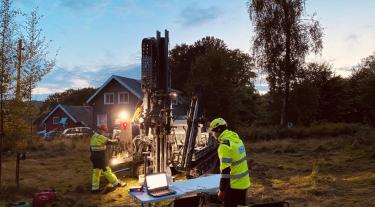Cone Penetration Testing (CPTU) is widely used to assess soil conditions at offshore wind turbine locations. Design standards exist to relate the CPTU results to soil classifications and engineering design parameters in sand and clay soils, but not silts. Similarly, bearing capacities are specified for fully-drained and undrained conditions, but not partially-drained conditions. As the offshore wind industry moves into emerging markets where these silty soils are more common, it is more important than ever to understand their behaviour.
To address this problem, the CSi project has succeeded in:
- Gathering a database of high-quality measured data from silty, partially-drained soils
- Combining this with data from lab testing and numerical modelling
- Deriving recommendations for investigating and interpreting silty soils and silt mixtures
- Generating generalised, robust industry guidance for inclusion in future standards
This guidance is helping the CSi Partners to de-risk foundation design and installation, and reduce costs by eliminating unnecessary conservatism.
In addition, the CSi project has advanced the state-of-the-art in the public domain literature, with several significant publications including:
- A.H.Augustesen et al, “CSi – a joint industry project into CPTUs in silty soils”, Cone Penetration Testing 2022 – Gottardi & Tonni (eds), DOI: 10.1201/9781003308829-35
- V.Fioravante et al, “Calibration cone penetration testing in silty soils”, Cone Penetration Testing 2022 – Gottardi & Tonni (eds), DOI: 10.1201/9781003308829-58
- C.Bilici et al, “Offshore geotechnical site characterization of silty soils: a novel database”, Offshore Site Investigation Geotechnics 9th International Conference Proceeding. Vol. 178. No. 183. Society for Underwater Technology, 2023
- P.Carotenuto et al, “Study of partial drainage effects in a natural silty deposit using variable rate CPTU testing”, Offshore Site Investigation Geotechnics 9th International Conference Proceeding. Vol. 178. No. 183. Society for Underwater Technology, 2023
These publications help to pave the way for widespread industry adoption of these methods.
Thank you to the project lead (Ørsted), the funding partners (Equinor, RWE, Vattenfall, ScottishPower Renewables and Shell) and researchers (NGI, ISMGEO, Fugro, RINA and In Situ Site Investigation) for making this project possible.


